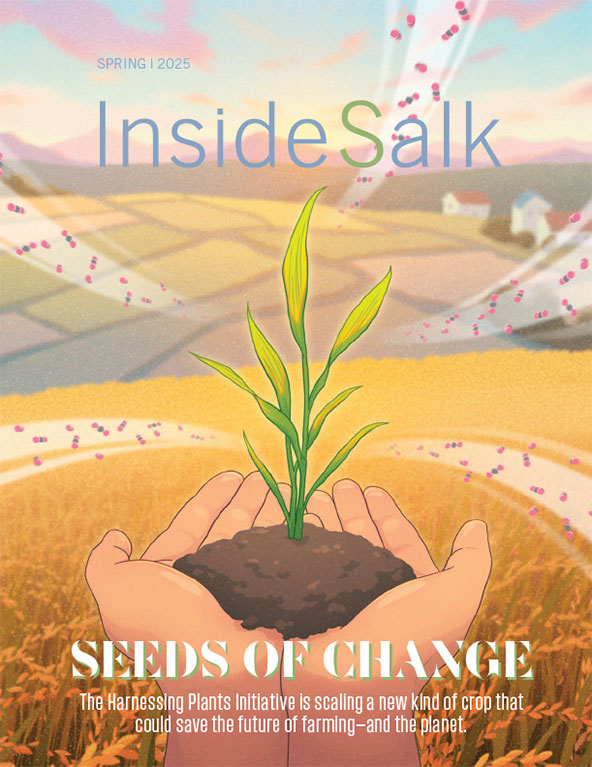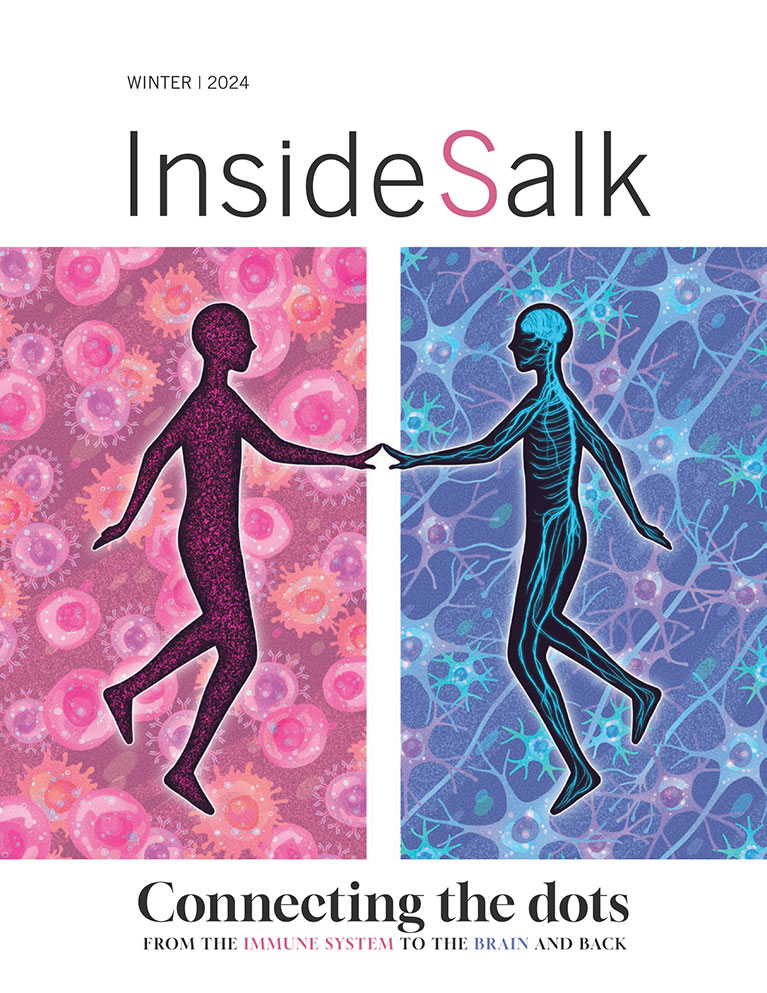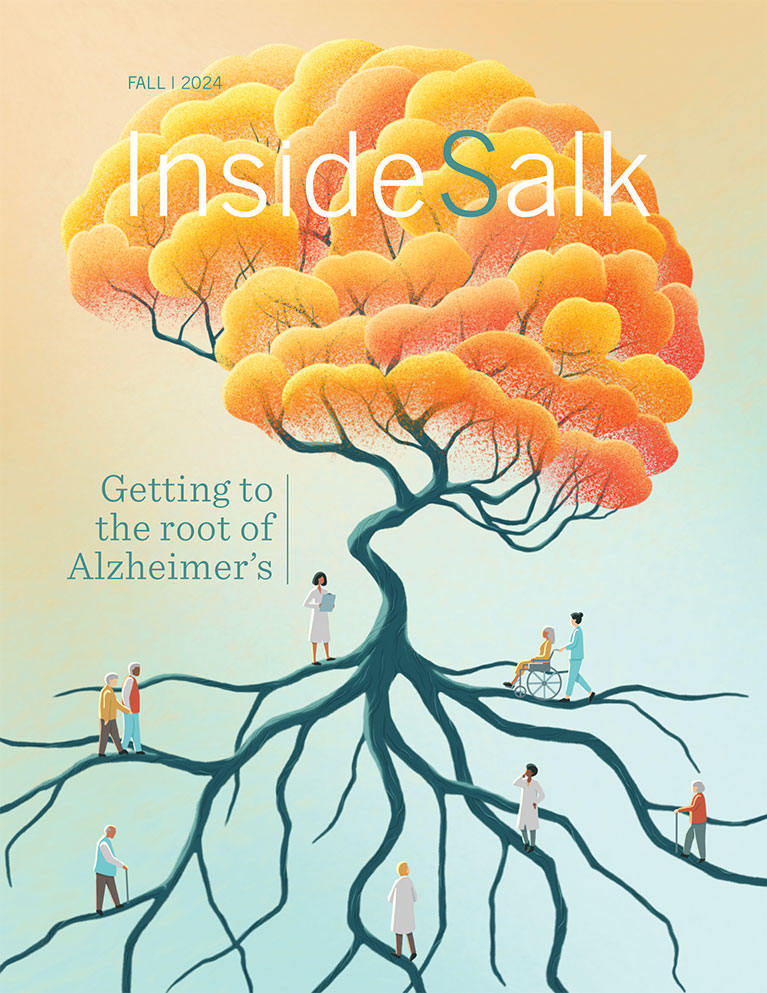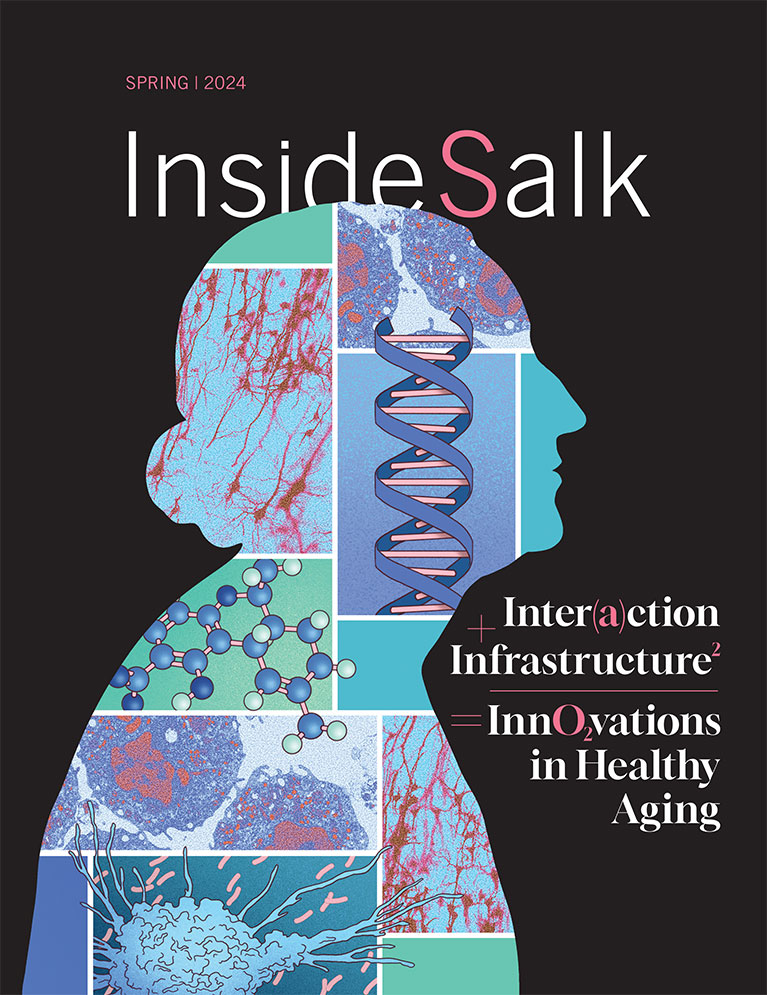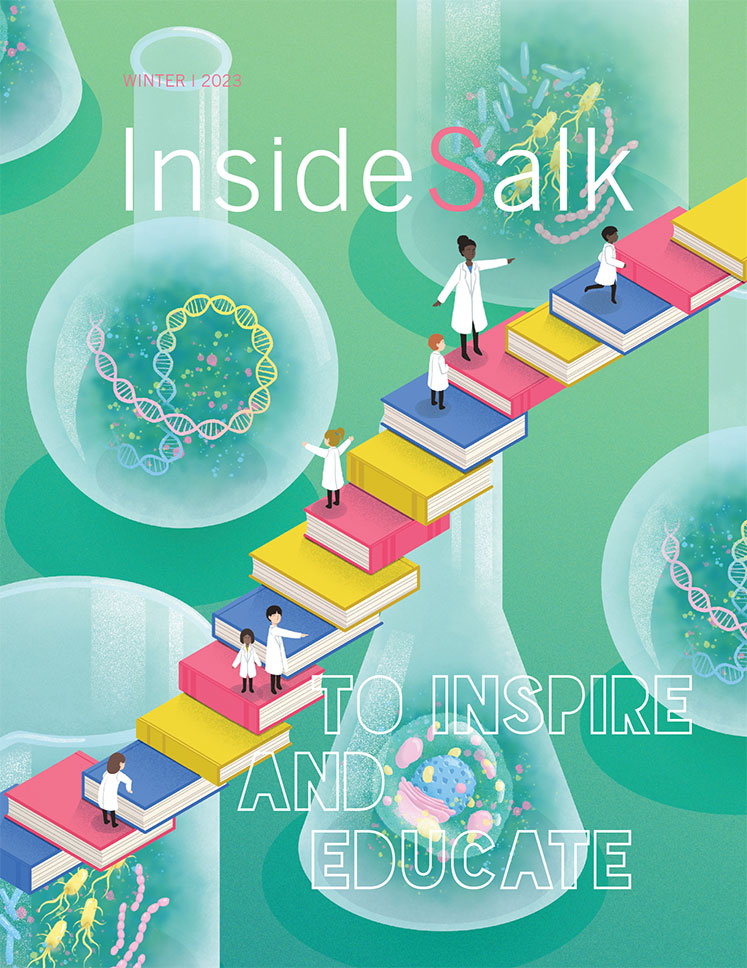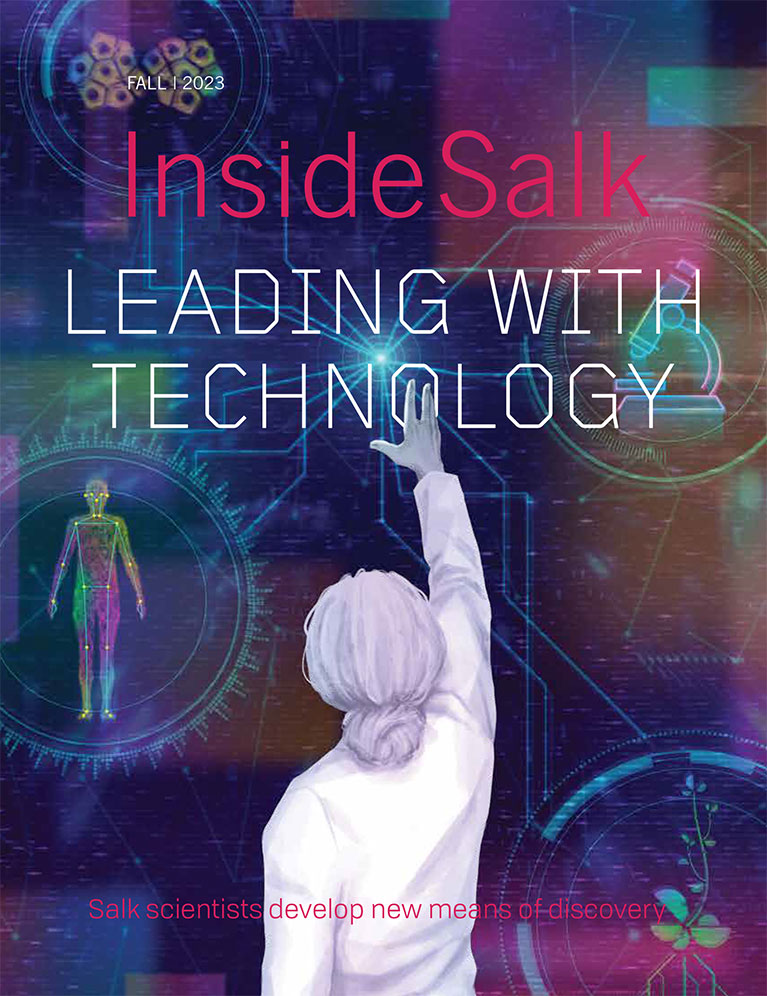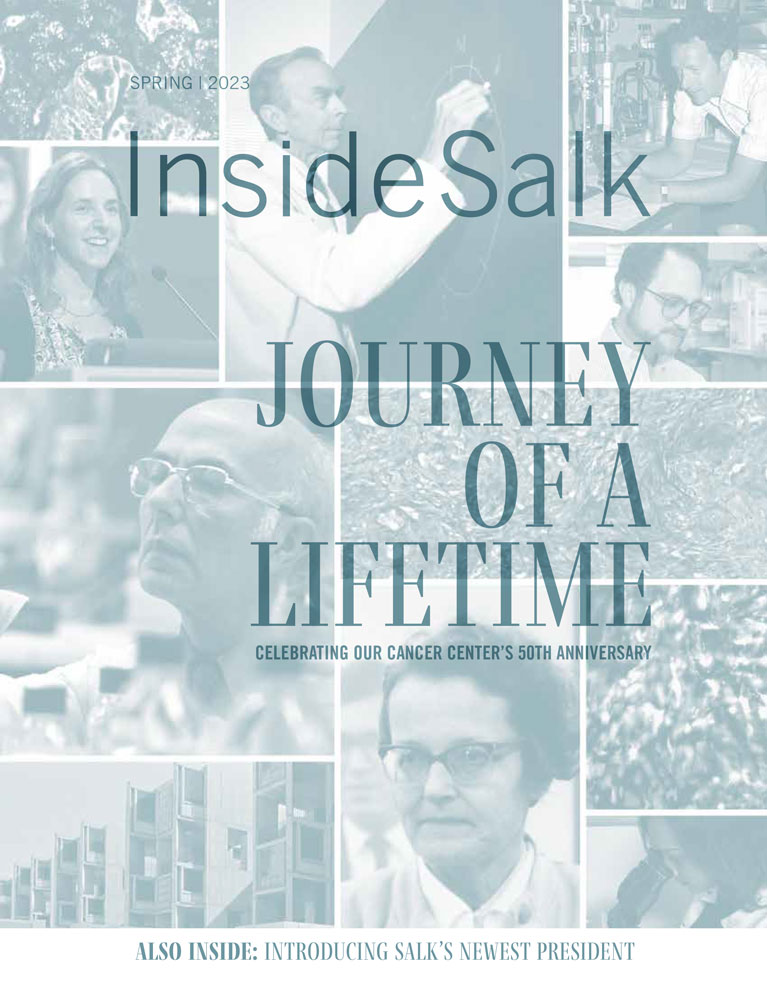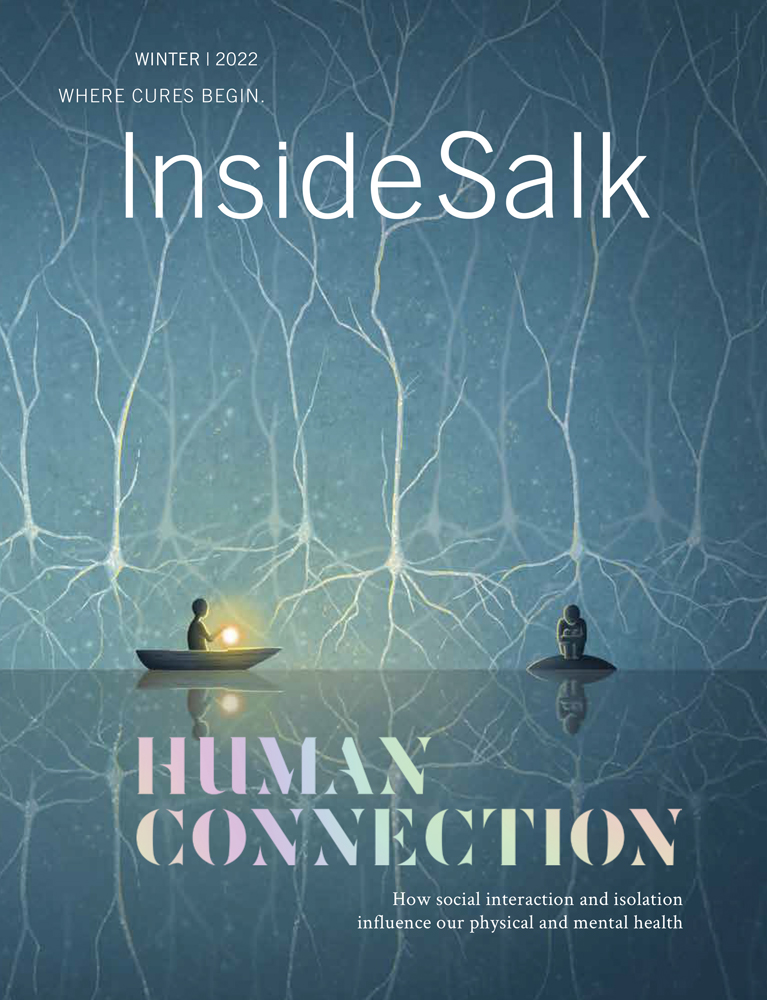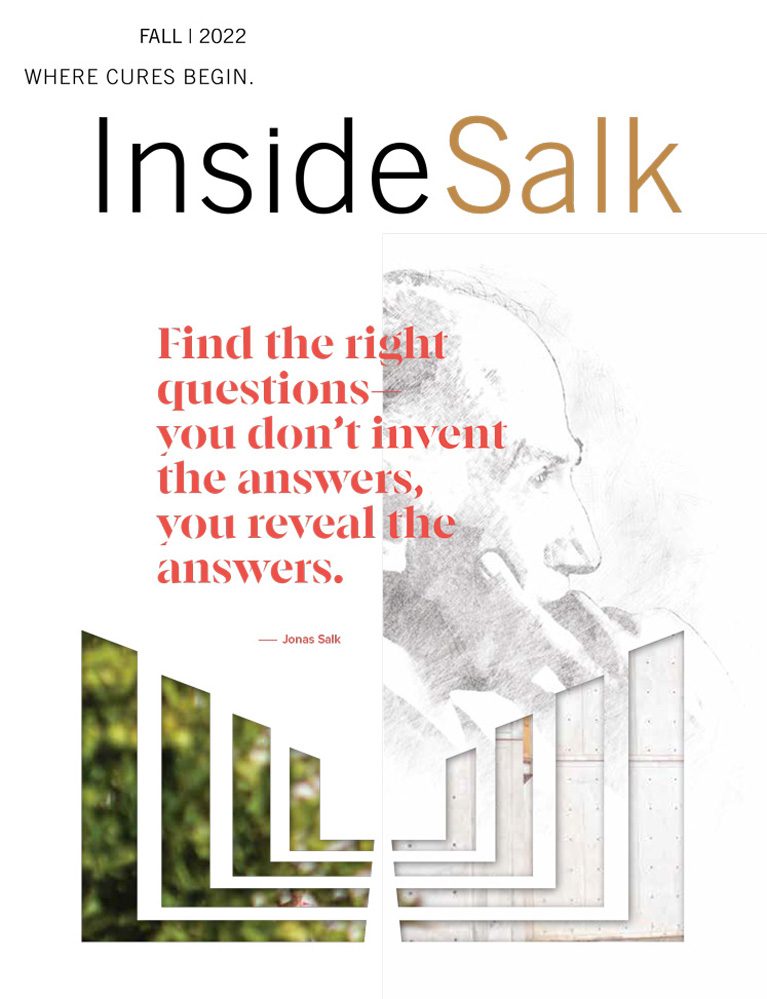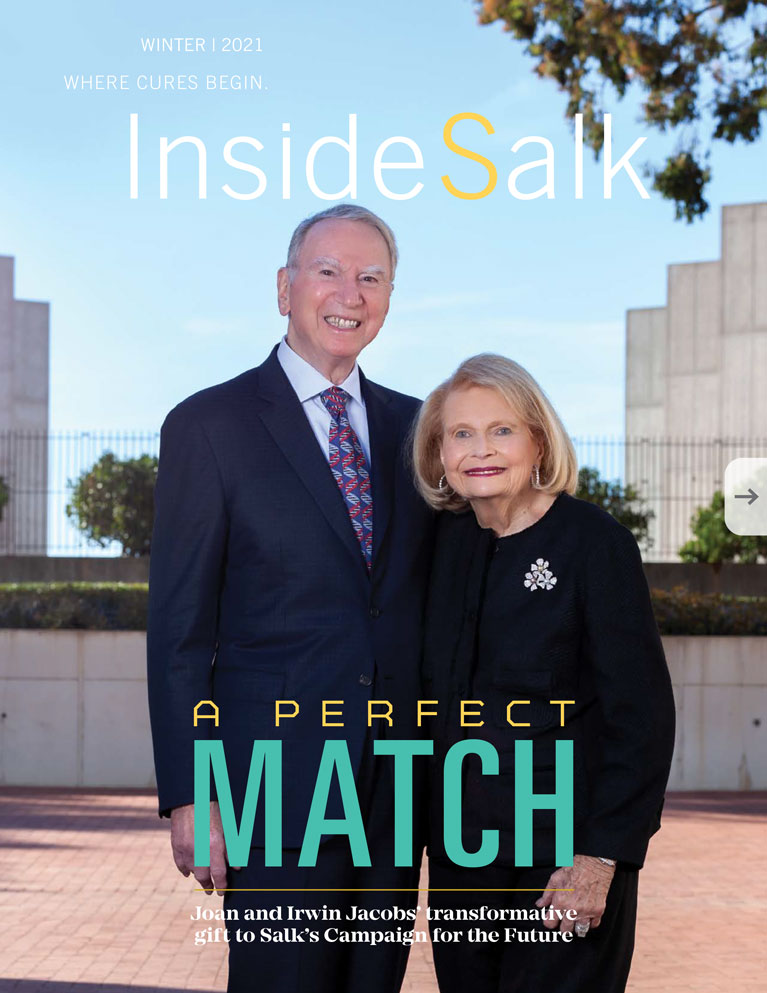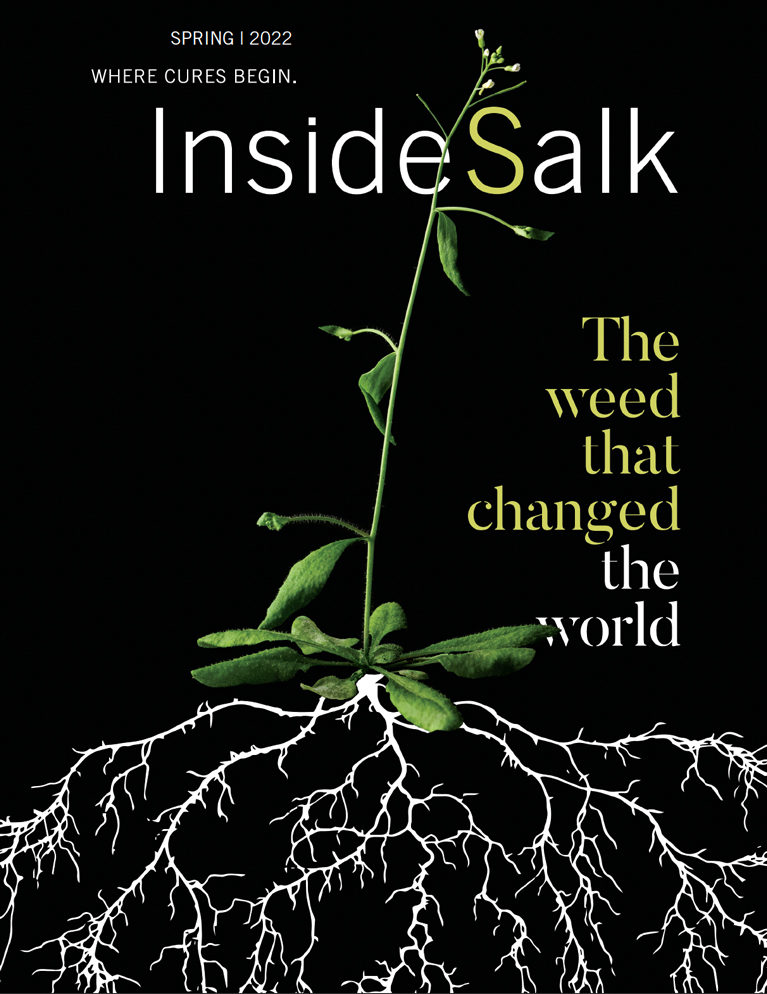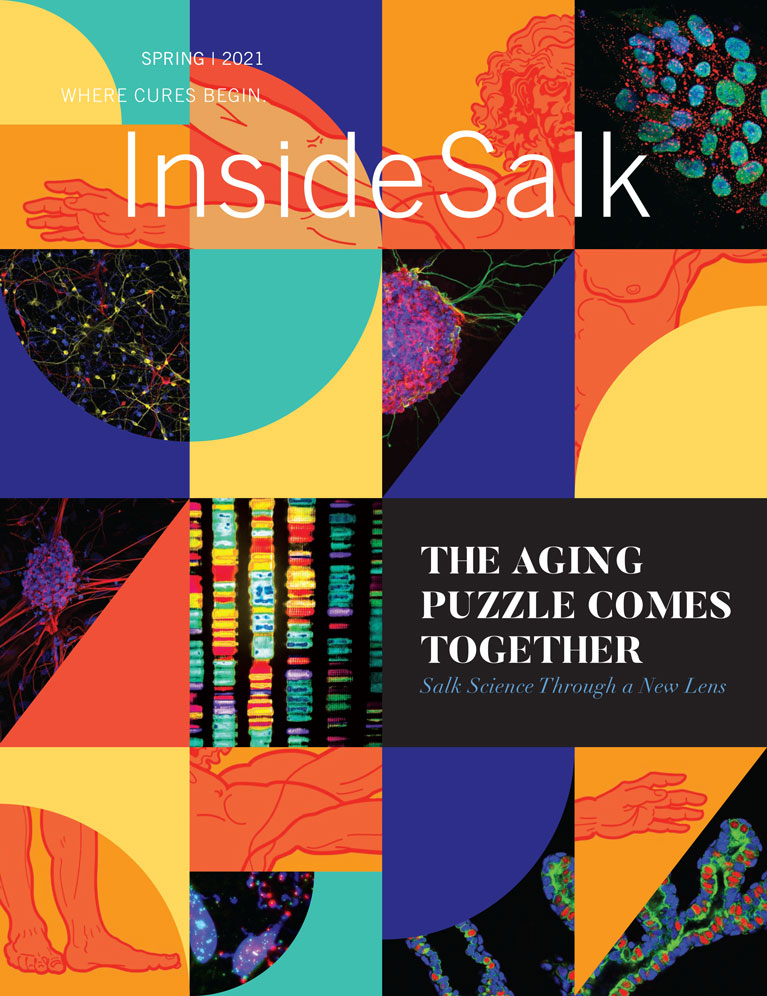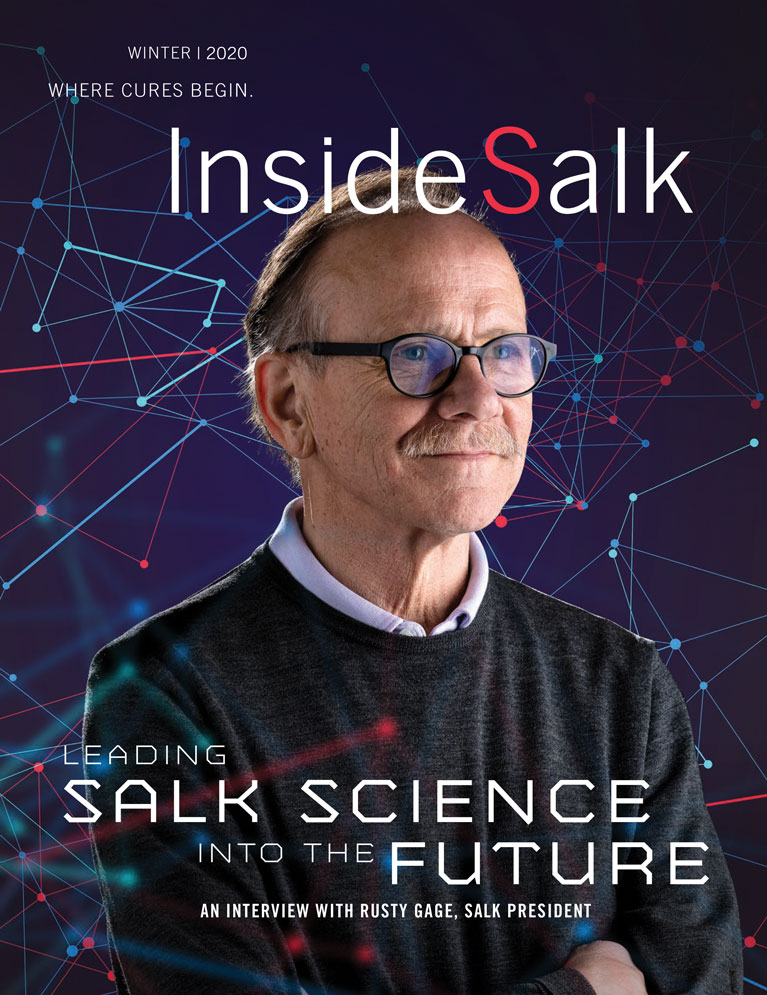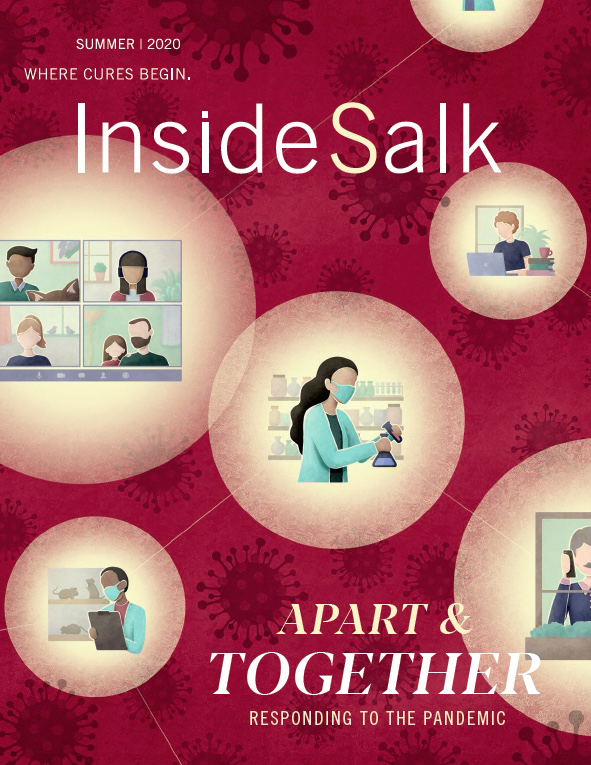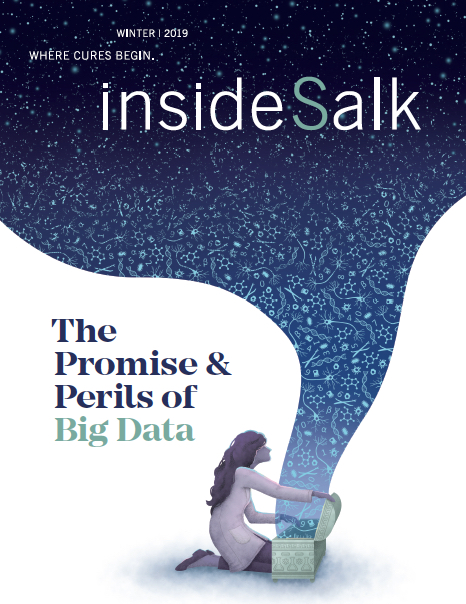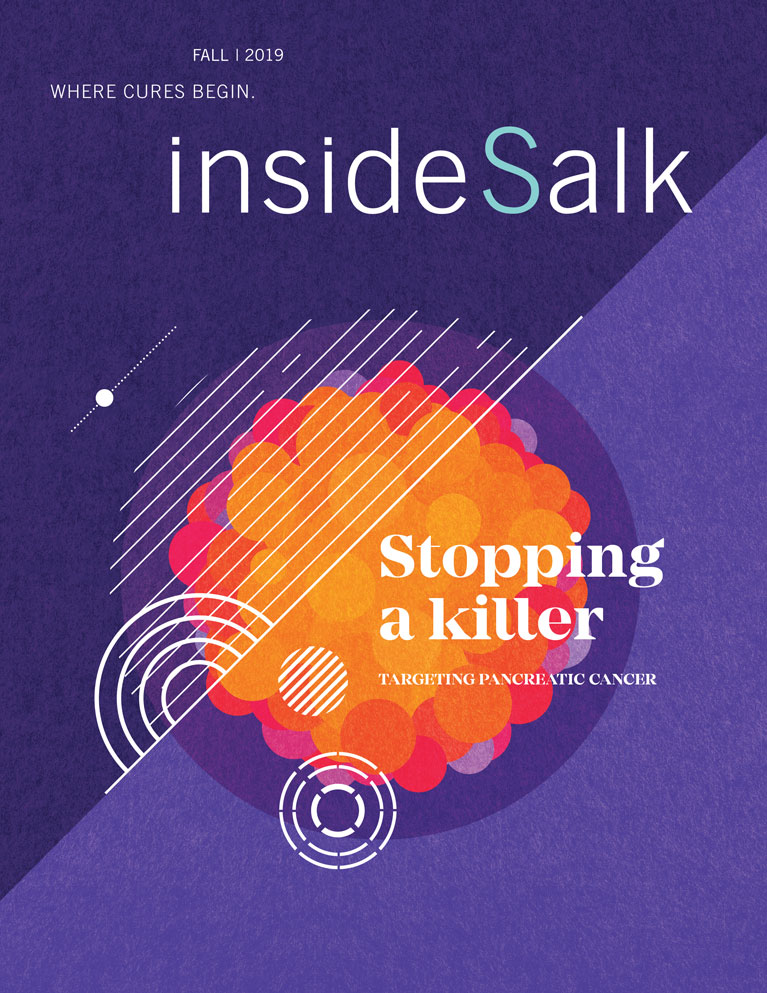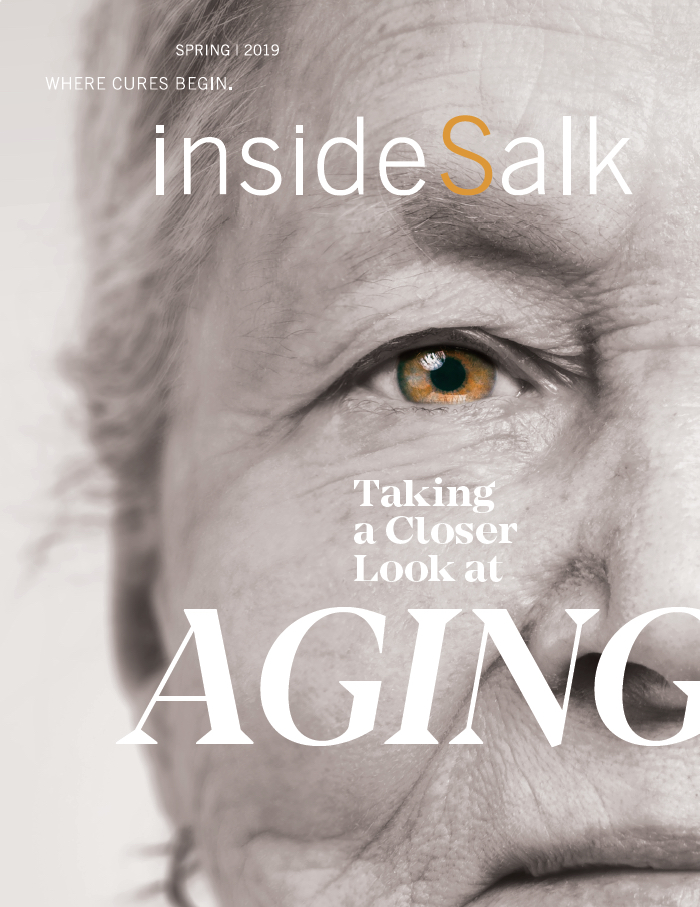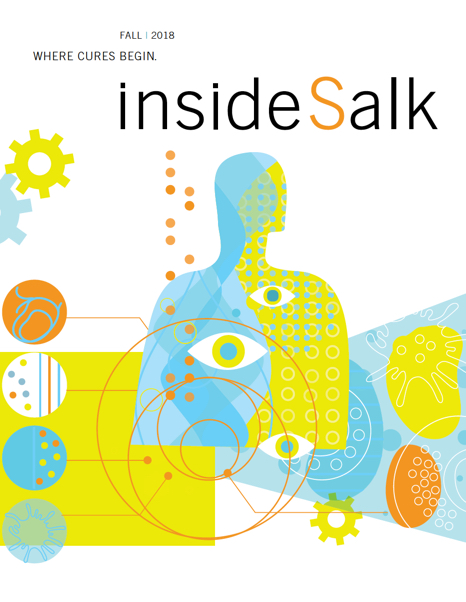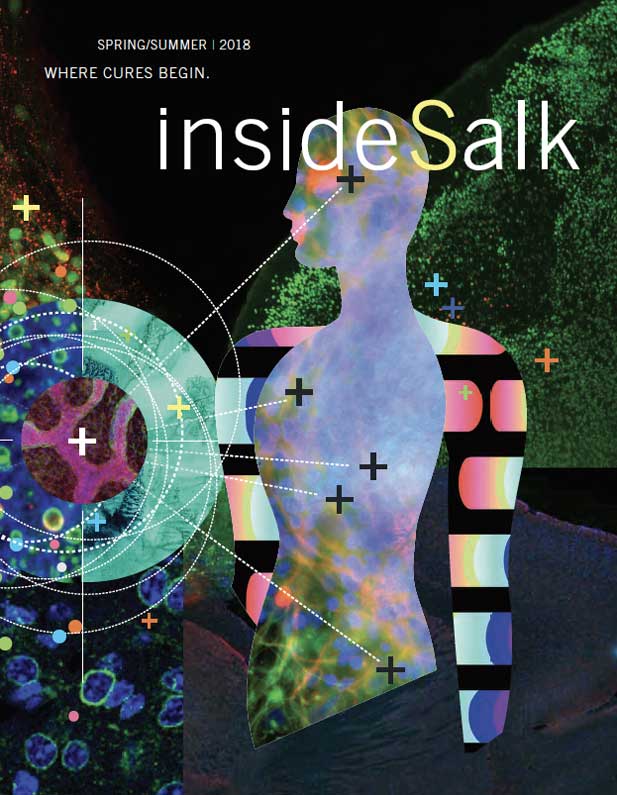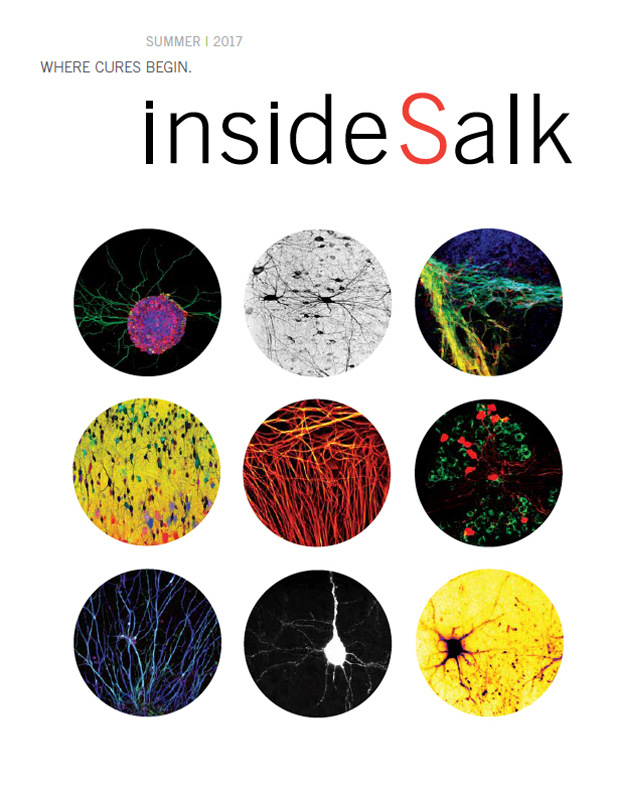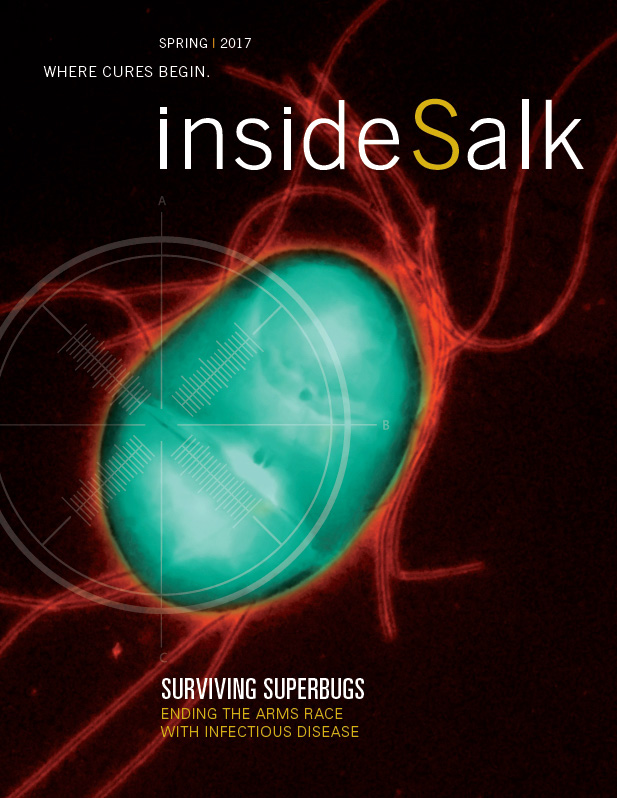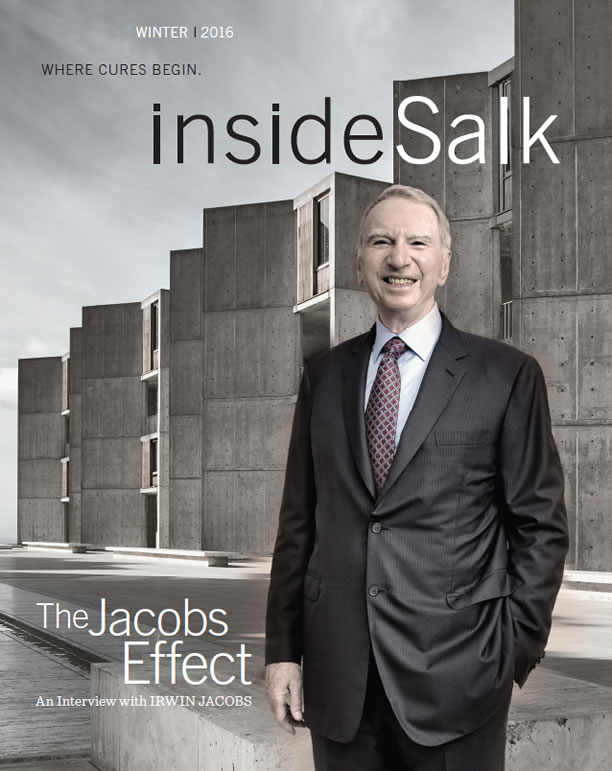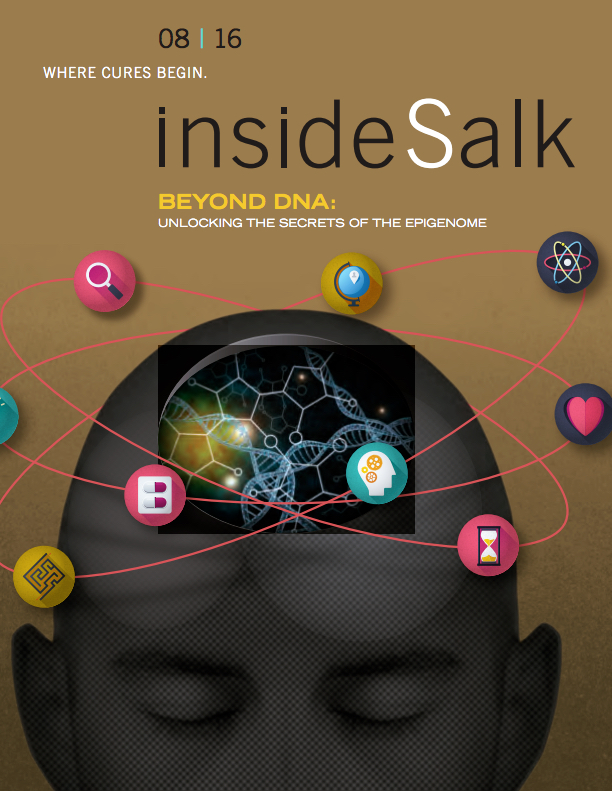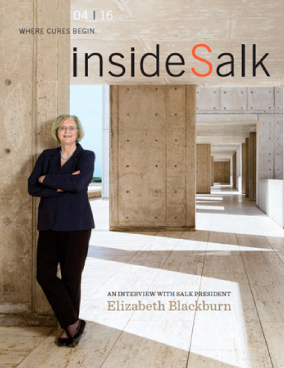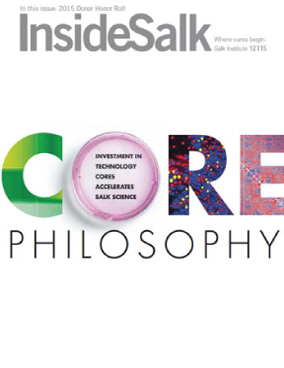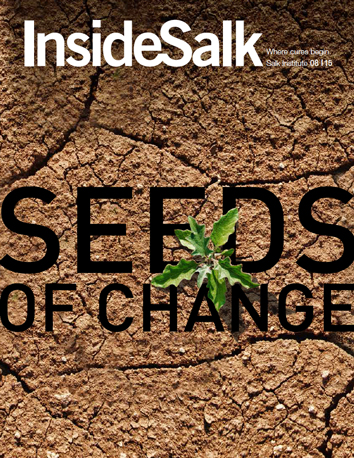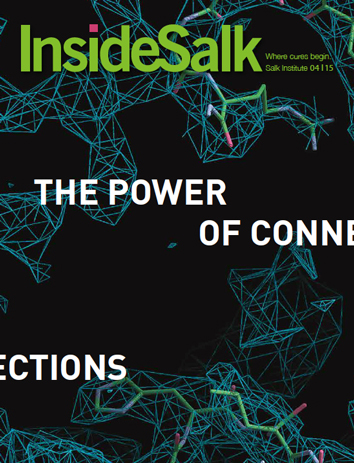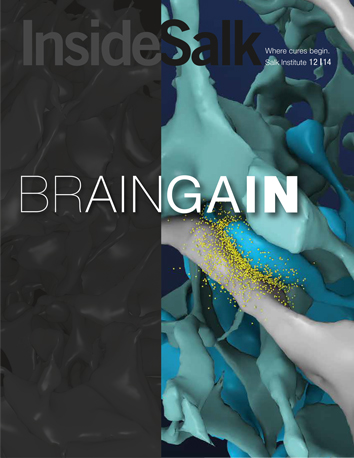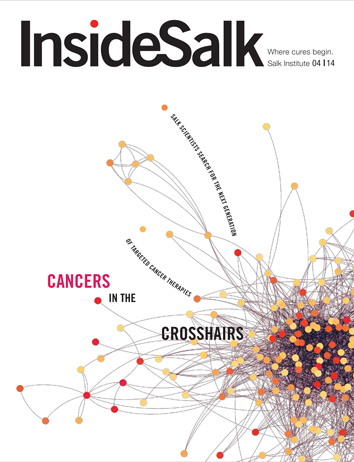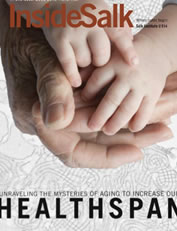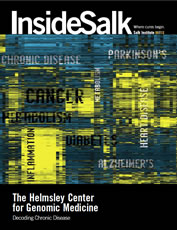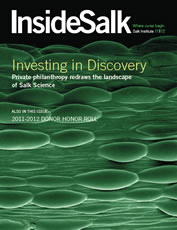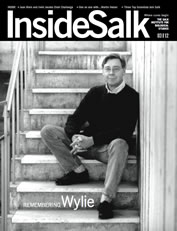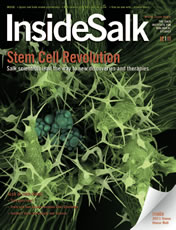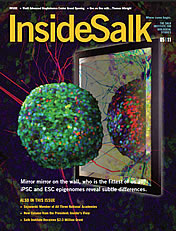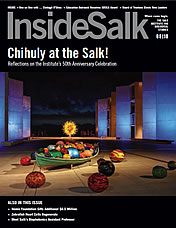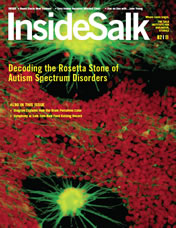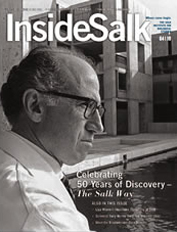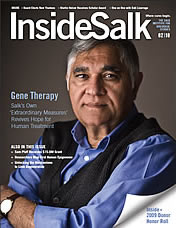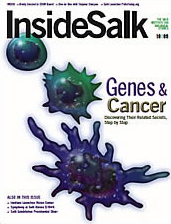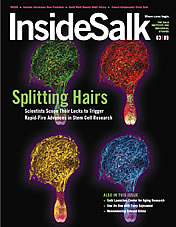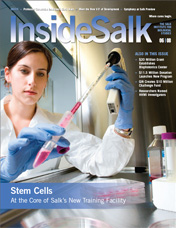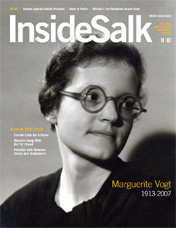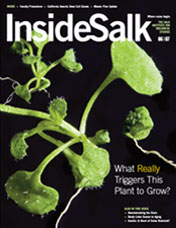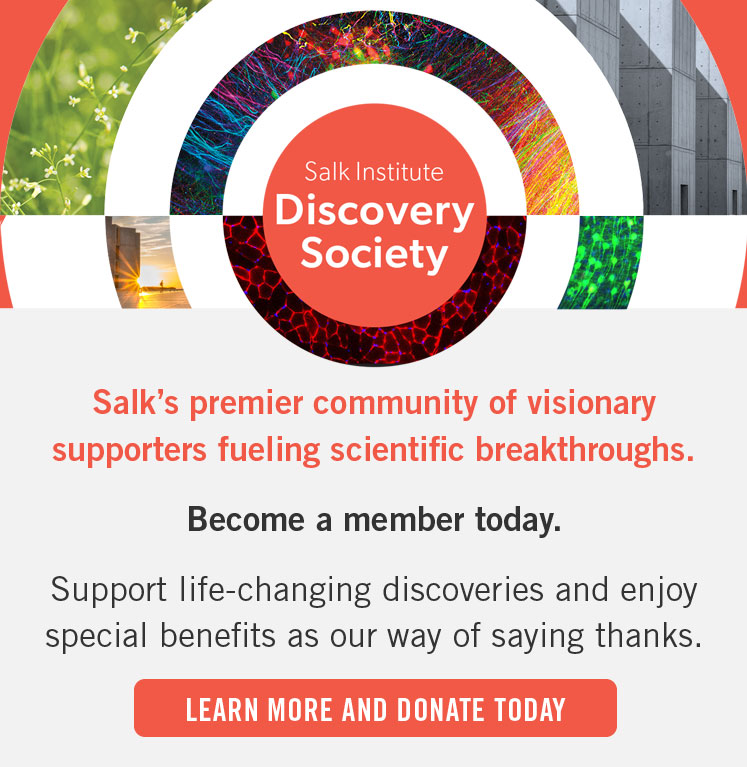Observations Nicola Allen Neuroscience has a new star
In the brain’s large cast of characters, neurons tend to steal the show. These specialized cells have dominated neuroscience research and funding for decades—and for good reason. Their electrical signals form the basis of all our thoughts, feelings, movements, and memories.
But behind the scenes, a group of star-shaped cells called astrocytes has been quietly influencing nearly every aspect of brain health and disease. Salk Professor Nicola Allen has been instrumental in bringing these underappreciated cells into the spotlight.
By daring to focus on what most others had overlooked, Allen helped usher in a paradigm shift. Many researchers now believe astrocytes and other non-neuronal brain cells could be the missing piece to understanding and treating many neurological diseases.
But much like the cells she studies, Allen isn’t one to seek the limelight. The British neuroscientist moves through her successes with great humility, quick to credit her collaborators and shift attention to the work that’s left to do. She speaks about her research with a measured precision. That also means when she believes in something, you know she has the data to back it up.
This combination of bold inquiry and grounded rigor is one of the many reasons Allen was recently promoted to full professor at the Salk Institute and bestowed the Roger Guillemin Chair. In the last year, she’s taken a leading role in the Institute’s new Neuroimmunology Initiative and its Year of Alzheimer’s Disease Research. She also received the 2024 National Institutes of Health Director’s Pioneer Award, which recognizes influential researchers pursuing high-risk, high-reward science.
Inside Salk sat down with Allen to learn how astrocytes are taking center stage in the future of brain health.
Where did your interest in science begin?
ALLEN: Growing up in the UK, we used to do these experiments in our science classes, like tossing a grid out on the grass and counting all the different kinds of plants we could find. They were simple, but they made me curious about the world around me. My biology teachers were also really excellent and very encouraging while I applied for university.
For a while, I thought I might become a veterinarian because I loved animals, so I started taking courses in anatomical sciences. But I quickly realized I wasn’t as interested in applying treatments as I was in figuring out the mechanisms behind them. I wanted to get to the root of the problem and make a difference by developing something new, rather than implementing what we already had. So that drew me toward a career in research.
What led you to neuroscience, and eventually astrocytes?
ALLEN: As an undergrad, the two things I found most interesting were neuroscience and immunology, probably because they’re the two major systems we knew the least about. I actually wrote my undergraduate thesis on how the immune system might interact with the brain, but this was long before we thought of neuroimmunology as its own discipline.
I did my PhD in London, studying how neurons are affected during stroke. I was using classic neurophysiology techniques to measure the neurons’ electrical activity. It’s amazing, really, to record what the brain is doing in real time. But there was also this recent explosion of new tools in molecular biology, so my advisor sent me to New York for a three-week course in molecular neuroscience at Cold Spring Harbor Laboratory.
That’s when I saw Ben Barres give a completely mind-blowing talk that changed everything for me.
Ben went up in front of this room of neuroscientists and showed us that when you isolate neurons from the rest of the brain and grow them in a dish, they don’t form any connections with each other. They don’t communicate. But if you add these other cells—astrocytes—then there are now tons of synaptic connections and tons of electrical activity moving through the neuronal circuit.
It was this amazing finding that really changed how I thought about brain development and what all these different cell types do. I immediately thought, I need to do my postdoc with this person. And that’s when I moved to Stanford University.
What was the perception of astrocytes at the time?
ALLEN: Astrocytes are a type of non-neuronal brain cell called glia. Glia were first thought to exist as a sort of structural scaffolding for the neurons to grow on. Then, we learned that astrocytes support the neurons in some more specialized ways, like bringing nutrients from the blood vessels to help fuel the neuron’s activity. So, they were important, but not considered to play an active role in how our brain communicates or processes information.
Once we had better tools to study these cells, all of that changed. But it took a long time for the rest of the field to appreciate our findings.
How has your work changed our understanding of the brain?
ALLEN: Our research has found that astrocytes play a very active role in brain development and plasticity. They don’t just support the neurons; they instruct them. The astrocytes are the ones releasing the signals that tell neurons to form synaptic connections with each other. Later, they release different signals to tell the neurons which synapses to keep and which to get rid of. They help build the brain’s circuitry, and then reshape it over time.
We’ve also learned that neurons can respond to astrocytes and give them feedback. It’s this amazing orchestration between cell types that keeps the brain circuits running smoothly. But if this communication breaks down in any way or the cells start sending the wrong signals, that can have a serious impact on the brain’s wiring. It’s why we’re now finding that astrocytes contribute to many neurodevelopmental and neurodegenerative diseases. But that also means they could be the key to treating them.
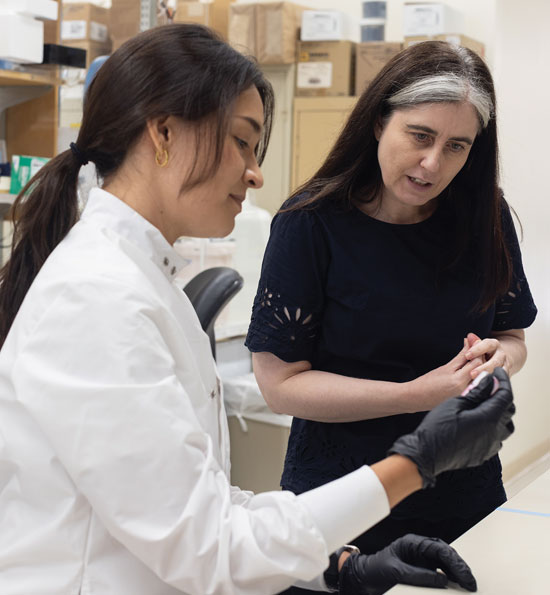
“We’re just beginning to fully appreciate the role of glia and astrocytes in the brain, and we’re already seeing so much potential for new therapeutic strategies. I think their story shows that exploring the unknown isn’t just bold or brave—it’s essential.”
–Professor Nicola Allen
How do astrocytes contribute to Alzheimer’s disease?
ALLEN: Most Alzheimer’s research has focused on the amyloid plaques that can form between neurons. What’s interesting is that these plaques are surrounded by astrocytes and other glia. But we’re just starting to investigate what these cells are doing there.
We also have data showing that Alzheimer’s patients have far more genetic changes in their glial cells than in their neurons. That’s made a lot of people start paying attention to these other cell types.
What’s especially interesting to me is how astrocytes could be contributing to even earlier stages of the disease. My lab has now identified the specific proteins that astrocytes secrete to promote synapse formation and stabilization. In Alzheimer’s models, astrocytes seem to produce less of these signals, sometimes even before any symptoms arise. That’s key, because synapse loss is a major driver of cognitive decline. We’re now testing whether restoring these signals could be enough to rescue some of the synapse loss or delay it long enough to preserve cognitive function.
How does this work relate to Salk’s new Neuroimmunology Initiative
ALLEN: The Neuroimmunology Initiative brings together researchers from neuroscience, immunology, aging, and cancer to understand how the immune and nervous systems impact each other in both health and disease.
For example, my lab recently found that as we age, astrocytes start activating immune genes. These are brain cells expressing immune signals that are typically used to fight off infections or cancer. That raised a lot of questions: What’s triggering this? Is it helpful or harmful? How does it affect neuronal function, memory, and behavior?
To answer these kinds of questions, I’m collaborating with Professors Susan Kaech, Diana Hargreaves, Axel Nimmerjahn, and other experts here at Salk. Together, we’re unpacking the role of glial-immune interactions in aging, Alzheimer’s, cancer, chronic pain, and more.
I think it’s possible that at the end of this, we could have a drug that dampens down the chronic neuroinflammation that contributes to all of these disorders.
What project are you most excited about right now?
ALLEN: I’m really excited that we’re finally at a place where we can start to use what we’ve learned about astrocytes to modify the state of the brain.
Now that we’ve identified the proteins that astrocytes use to trigger synapse formation, we’re developing tools to deliver them as needed: adding or blocking these signals when you want to create, repair, or remodel the connections between neurons. It’s a totally different way of treating the brain—not by altering neurons directly, but by tuning the environment around them.
I think 20 years ago, people would’ve thought it wasn’t possible, or that you should focus on making drugs that target neurons. But neurons are very precious, so if we can do an intervention that doesn’t mess with the neurons directly, but instead uses these environmental cues to guide their activity toward a healthier state, to me, that’s a better way.
Why is Salk the right place to do this kind of science?
ALLEN: Salk is special because of the people. There’s a culture of curiosity here. People are excited about new ideas, even if they’re outside the mainstream. When I arrived, glial biology was still considered fairly niche, but my colleagues were genuinely enthusiastic and eager to collaborate.
The Institute’s structure also encourages these collaborations. I’m meeting weekly with experts on cancer, aging, immunity, and genomics. That crosstalk accelerates everything.
We’re just beginning to fully appreciate the role of glia and astrocytes in the brain, and we’re already seeing so much potential for new therapeutic strategies. I think their story shows that exploring the unknown isn’t just bold or brave—it’s essential. Science moves forward when we give researchers the freedom to ask big questions, and the tangible support to see them through. The kinds of questions we’re asking—about aging, memory, inflammation, and regeneration—require that kind of ecosystem. And it’s exactly what we have here at Salk.
Featured Stories
 What’s next for GLPs? Salk scientists are shaping the future of weight-loss medicineSalk researchers are breaking metabolism down piece by piece. Their recent discoveries could help reduce the side effects of GLP-1 drugs and inspire the next generation of weight management therapies.
What’s next for GLPs? Salk scientists are shaping the future of weight-loss medicineSalk researchers are breaking metabolism down piece by piece. Their recent discoveries could help reduce the side effects of GLP-1 drugs and inspire the next generation of weight management therapies.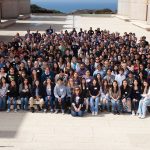 Science comes alive for high schoolers and educators at SalkSalk’s annual High School Science Day had the highest participation in the event’s history, as 205 excited students were welcomed onto campus. Teachers also had a day of their own at the Ellen Potter Teacher Symposium, learning side-by-side with world-renowned scientists.
Science comes alive for high schoolers and educators at SalkSalk’s annual High School Science Day had the highest participation in the event’s history, as 205 excited students were welcomed onto campus. Teachers also had a day of their own at the Ellen Potter Teacher Symposium, learning side-by-side with world-renowned scientists.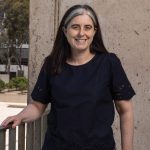 Nicola Allen: Neuroscience has a new starAs her recent promotion and awards reflect, Allen has led a paradigm shift in neuroscience by turning the field's spotlight onto astrocytes. These specialized brain cells could be the missing piece to understanding Alzheimer's and other neurological diseases.
Nicola Allen: Neuroscience has a new starAs her recent promotion and awards reflect, Allen has led a paradigm shift in neuroscience by turning the field's spotlight onto astrocytes. These specialized brain cells could be the missing piece to understanding Alzheimer's and other neurological diseases. Michelle Chamberlain: Bringing together communities old and newChamberlain, whose lifelong commitment to others has shaped her journey to Salk, now serves as Salk’s vice president of External Relations, leading fundraising, communications, community engagement, foundation relations, and stewardship efforts.
Michelle Chamberlain: Bringing together communities old and newChamberlain, whose lifelong commitment to others has shaped her journey to Salk, now serves as Salk’s vice president of External Relations, leading fundraising, communications, community engagement, foundation relations, and stewardship efforts.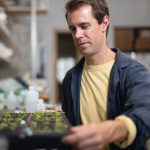 Joseph Swift: Saving potatoes, one road trip at a timeSwift, a plant biologist and startup co-founder, had an adventurous upbringing in Australia filled with natural beauty. Today, he uses plant genomics to tackle urgent questions in sustainability and agriculture.
Joseph Swift: Saving potatoes, one road trip at a timeSwift, a plant biologist and startup co-founder, had an adventurous upbringing in Australia filled with natural beauty. Today, he uses plant genomics to tackle urgent questions in sustainability and agriculture.

